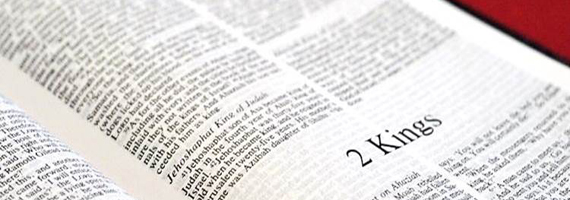
Ahaz was Judah’s 12th king following the division of the descendants of Abraham into two kingdoms. Of the royal line of King David, Ahaz reigned from approximately 730-715 B.C. in Jerusalem. Several noteworthy “acts of Ahaz” are preserved in 2 Kings 16.
- “He did not do what was right in the eyes of the LORD his God” (16:2).
- “He walked in the way of the kings of Israel” (16:3a).
- “He even burned his son as an offering, according to the despicable practices of the nations whom the LORD drove out” (16:3b).
- “He sacrificed and made offerings on the high places and on the hills and under every green tree” (16:4).
2 Kings 16:5-9 documents the help Ahaz sought from Tiglath-pileser king of Assyria in war against Syria and Israel.
When King Ahaz went to Damascus to meet Tiglath-pileser king of Assyria, he saw the altar that was at Damascus. And King Ahaz sent to Uriah the priest a model of the altar, and its pattern, exact in all its details. And Uriah the priest built the altar; in accordance with all that King Ahaz had sent from Damascus, so Uriah the priest made it, before King Ahaz arrived from Damascus. And when the king came from Damascus, the king viewed the altar. Then the king drew near to the altar and went up on it and burned his burnt offering and his grain offering and poured his drink offering and threw the blood of his peace offerings on the altar. And the bronze altar that was before the LORD he removed from the front of the house, from the place between his altar and the house of the LORD, and put it on the north side of his altar. And King Ahaz commanded Uriah the priest, saying, “On the great altar burn the morning burnt offering and the evening grain offering and the king’s burnt offering and his grain offering, with the burnt offering of all the people of the land, and their grain offering and their drink offering. And throw on it all the blood of the burnt offering and all the blood of the sacrifice, but the bronze altar shall be for me to inquire by.” Uriah the priest did all this, as King Ahaz commanded.
And King Ahaz cut off the frames of the stands and removed the basin from them, and he took down the sea from off the bronze oxen that were under it and put it on a stone pedestal. And the covered way for the Sabbath that had been built inside the house and the outer entrance for the king he caused to go around the house of the LORD, because of the king of Assyria. (2 Kings 16:10-18)
If this sort of thing “was written for our instruction” (Rom 15:4), what can we learn from the ancient “acts of Ahaz”?
- Ahaz did not respect the LORD as the determiner of that which is “right” (16:2).
- Ahaz looked to the wrong source for deliverance, protection, and guidance (16:7).
- Ahaz became enamored with the wrong pattern of worship (16:10).
- Ahaz desecrated the worship of the LORD in order to please a different king (16:18).
Do not the same self-centered pitfalls continue to ensnare people more than 2,700 years later?
- In our handling of God’s revealed will?
- In our sources of encouragement, wells of inspiration, and models of imitation?
- In our patterns of worship?
- In the object of our praise?
This sermon was delivered on February 17, 2013.
For more sermons, visit the sermons archive or subscribe to the podcast.